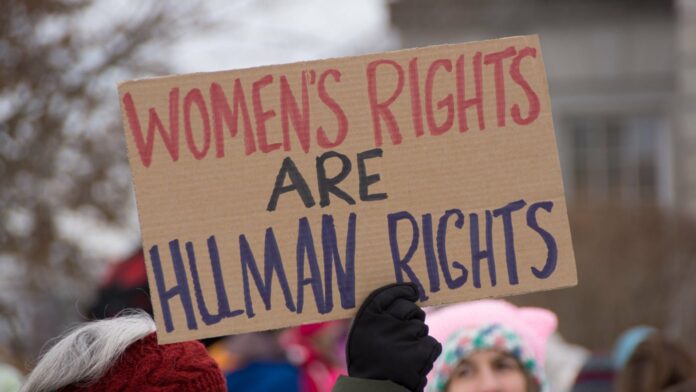Feminism, as a multifaceted movement, has often been scrutinized for its focus on women’s issues, leading to the poignant question: Do feminists fight for everyone’s rights, or solely for women’s rights? This inquiry necessitates a nuanced exploration of feminist theory, historical context, and the evolving landscape of social justice advocacy. To delve deep into this subject, one must first examine the roots of feminism, the critical intersections it engenders, and the scope of its contemporary objectives.
The Genesis of Feminist Thought
The genesis of feminist thought can be traced back to the early suffrage movements during the 19th and early 20th centuries. Pioneering figures like Mary Wollstonecraft and Susan B. Anthony advocated for women’s equality primarily within the domain of legal rights and societal roles. However, their activism—while fundamentally significant in the quest for women’s enfranchisement—also laid the groundwork for broader inquiries into human rights and social equity.
As we navigate through different waves of feminism, it becomes evident that each phase has expanded the discourse surrounding rights. The first wave, predominantly concerned with legal inequalities, birthed more complex considerations. The second wave subsequently broached topics such as reproductive rights, workplace equality, and sexual liberation. Today’s third wave and fourth wave feminism embrace intersectionality, thereby incorporating diverse voices that complicate the narrative of rights advocacy.
Intersectionality: A Framework for Inclusivity
The introduction of intersectionality—a term coined by Kimberlé Crenshaw—has been pivotal in reframing feminist discourse. This conceptual framework posits that individuals experience intersecting forms of discrimination based not only on gender but also race, class, sexual orientation, and other identities. Consequently, the question of whether feminism solely champions women’s rights becomes increasingly complex.
Feminism, through an intersectional lens, acknowledges that the struggles faced by women cannot be disentangled from the broader social injustices experienced by marginalized communities. For example, Black feminists like bell hooks and Audre Lorde have emphasized that the fight for women’s rights must also encompass the struggles against racism, capitalism, and homophobia. Their contributions elucidate that a fight for women’s rights, in its most authentic form, inherently advocates for all oppressed individuals.
Rethinking Rights: Expanding the Definition of Feminism
As societal challenges evolve, so too does the definition of feminism. In contemporary discourse, many feminists assert that genuine advocacy transcends issues uniquely affecting women. This includes the fight for LGBTQ+ rights, environmental justice, and economic equity. By recognizing that societal issues are interlinked, contemporary feminists expand their mission beyond the confines of traditional women’s issues.
Moreover, the rise of grassroots movements such as the Black Lives Matter and #MeToo has demonstrated a collective understanding that fighting for rights cannot selectively benefit one group without addressing the systemic injustices faced by another. Such movements amalgamate various struggles, highlighting that the systemic oppression of any group inevitably reverberates throughout society. The interconnected nature of these movements illustrates that true justice can only be achieved through solidarity—a fundamental tenet in feminist ideology.
Criticism and Misunderstanding: A Common Narrative
Despite its expansive definition, feminism often faces criticism and misunderstanding. Detractors frequently argue that feminists are solely concerned with women’s rights, sometimes painting the movement as exclusionary. This misconception detracts from the profound complexities inherent in feminist advocacy that aims to dismantle all forms of oppression.
Moreover, certain factions within feminist movements, notably radical feminists, have at times been accused of adopting exclusionary practices. However, it is essential to distinguish between various strands of feminism to avoid generalizing the movement. Understanding that feminism includes multiple perspectives is crucial for illuminating its broad commitment to human rights and social justice.
The Role of Men in Feminist Movements
The narrative surrounding feminism often overlooks the role men can play in this discourse. Advocating for women’s rights does not preclude men from participating; in fact, male allies can significantly contribute to the movement’s goals. Prominent figures amidst the #HeForShe campaign, initiated by UN Women, champion the notion that gender equality is a collective responsibility.
Such initiatives highlight the importance of engaging men as partners in the fight against gender-based oppression, advocating for a model of masculinity that supports equity rather than dominance. Feminism, therefore, not only includes the pursuit of women’s rights but also critiques the structures of power that disadvantage all marginalized identities.
The Global Perspective: Feminism as a Universal Struggle
Feminism must also be examined through a global lens. In many cultures, the fight for women’s rights intersects with issues such as poverty, education, healthcare, and political representation. Feminists around the world confront the realities of systemic inequalities that shape the lived experiences of women and other marginalized groups. This global lens amplifies the understanding that feminism extends beyond the Western perspective, encompassing a multitude of voices advocating for human rights in diverse contexts.
For example, organizations like Women for Women International empower women in war-torn areas by facilitating access to education, economic resources, and political engagement. Their initiatives illustrate the expansive nature of feminist advocacy, highlighting that while women’s rights are a primary focus, they are interwoven with broader humanitarian issues affecting entire communities.
Conclusion: A Collective Fight for Justice
In concluding this exploration, it is evident that feminism, in its most robust form, does not exclusively champion women’s rights; rather, it serves as a crucial framework for advocating rights for all marginalized individuals. Through an intersectional approach, redefined roles, and an inclusive worldwide perspective, feminism emerges as a collective fight for justice. It is essential to continue broadening the narrative, fostering inclusivity, and advocating for integrated rights across the spectrum of human experience. Advocates must remain vigilant to ensure that feminism evolves and integrates varying identities, ultimately striving for a future where equity and justice prevail for everyone.





























